Koshari Recipe: How to Make Egypt’s Beloved National Dish at Home
Introduction
Egypt is a land of ancient pyramids, the mighty Nile, and centuries of history. But beyond its monuments and traditions lies another treasure—Egyptian cuisine. Among all Egyptian dishes, one stands out as both iconic and comforting: Koshari (also spelled Kushari).
Often called the national dish of Egypt, Koshari is a unique blend of rice, lentils, chickpeas, pasta, tangy tomato sauce, and crispy fried onions.
What makes Koshari truly special is its diversity of flavors and textures. Every spoonful is an explosion—soft rice, earthy lentils, chewy pasta, creamy chickpeas, spicy tomato sauce, and the irresistible crunch of fried onions.
It’s filling, budget-friendly, and vegetarian-friendly, making it one of the most loved street foods in Cairo and beyond. If you’ve never tried Egyptian food before, Koshari is the perfect place to start. In this guide, we’ll explore its origin, why it’s worth trying, and most importantly, how you can prepare an authentic version at home.
Origin of Koshari
Although Koshari is now considered Egypt’s national dish, its history reflects global influence. The name itself is derived from the Indian dish “Khichdi,” a mix of rice and lentils. During the 19th century, British colonizers brought rice and lentils to Egypt as part of their diet. Around the same time, Italians introduced pasta to the region.
Egyptian cooks, known for their creativity, combined these ingredients with local flavors and created something entirely unique.
By the late 1800s, Koshari had become a staple in Egyptian households and soon made its way to the streets. Street vendors began selling it in large bowls, layering rice, lentils, and pasta, and topping it with chickpeas, spicy tomato sauce, and fried onions.
Today, Koshari is more than just a dish—it’s a symbol of Egypt’s multicultural history and a source of national pride.
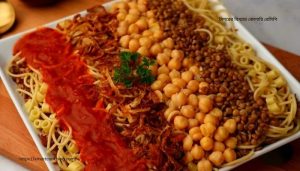
Reasons to Try Koshari
- Flavorful Layer—Koshari combines multiple textures: crispy, soft, chewy, and creamy all in one bite.
- Nutritious—Packed with plant-based protein from lentils and chickpeas, plus energy-boosting carbs from rice and pasta.
- Budget-Friendly – Made with inexpensive ingredients, making it accessible for everyone.
- Vegetarian Delight—A hearty meal that satisfies without meat.
- Cultural Experience—Eating Koshari is like taking a bite of Egyptian culture.
Full Recipe: Ingredients & Instructions
Ingredients
For the base:
- 2 cups rice
- 1 cup brown lentils
- 1 cup chickpeas (boiled)
- 1 cup pasta (macaroni or small shapes)
For the tomato sauce:
- 4–5 medium tomatoes
- 2 tbsp tomato paste
- 5 garlic cloves
- 2 tbsp vinegar
- 1 tsp red chili powder
- ½ tsp black pepper
- Salt to taste
- 2–3 tbsp vegetable oil
For the topping:
- 2 large onions (thinly sliced)
- Oil for frying
Step-by-Step Instructions
Step 1: Cook the rice
- Wash the rice and cook it in salted water until fluffy. Keep aside.
Step 2: Prepare the lentils
- Wash and boil the lentils in water with a pinch of salt until soft but not mushy. Drain and set aside.
Step 3: Cook the pasta
- Boil pasta in salted water until al dente, then drain.
Step 4: Make the tomato sauce
- Blend tomatoes, garlic, and tomato paste into a smooth mixture.
- Heat oil in a pan, add the mixture, and cook on medium heat.
- Add vinegar, chili powder, black pepper, and salt. Let it simmer until thick.
Step 5: Fry the onions
- Slice onions thinly and fry in hot oil until golden brown and crispy. Drain on paper towels.
Step 6: Assemble the Koshari
- In a large bowl or plate, start with a layer of rice.
- Add lentils, pasta, and chickpeas on top.
- Pour generous amounts of tomato sauce.
- Finish with crispy fried onions as the crown.
Your authentic Egyptian Koshari is ready to serve!
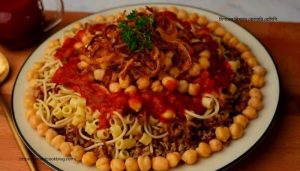
Serving Ideas
- Koshari is best enjoyed hot, straight after assembling.
- Pair it with a fresh cucumber-tomato salad for balance.
- Serve alongside pickles or a squeeze of lemon for an extra tang.
- A chilled glass of lemonade or mint tea goes perfectly with it.
Uses of Koshari
- Main Meal—Perfect for both lunch and dinner.
- Family Gatherings – Its large quantity makes it ideal for feeding many people.
- Festivals & Cultural Events—A great way to introduce Egyptian cuisine to others.
- Street Food Vibes at Home—Make it in bulk and enjoy the experience of Cairo’s famous food stalls.
Frequently Asked Questions (FAQ)
Q1: Is Koshari always vegetarian?
👉 Yes, traditionally, Koshari is vegetarian. However, some modern versions add chicken or beef on the side.
Q2: Can I make Koshari ahead of time?
👉 Yes! Cook rice, lentils, pasta, and chickpeas separately, and store them in containers. Make the sauce and fried onions fresh before serving.
Q3: Which lentils are best for Koshari?
👉 Brown lentils are ideal, but green or red lentils can also work.
Q4: Is Koshari gluten-free?
👉 Not traditionally, because of pasta. But you can use gluten-free pasta if needed.

Tips for Perfect Koshari
- Fry onions patiently—don’t rush; they need to turn golden and crispy for the authentic taste.
- Vinegar is ke—itt balances the tomato sauce and gives that signature tangy flavor.
- Layering matters—assemble just before serving so it doesn’t become soggy.
- Spice it up—add chili oil or hot sauce if you love extra heat.
- Cook in batche—preparee components separately in advance to save time.
Conclusion
Koshari is more than a dish—it’s a story of Egypt’s history, resilience, and culinary creativity. Born from cultural influences across India, Britain, and Italy, it has transformed into Egypt’s proud national dish. With its humble ingredients, it proves that food doesn’t need to be expensive to be delicious.
If you want to experience authentic Egyptian flavors without leaving your home, Koshari is the perfect recipe to try. It’s filling, flavorful, vegetarian-friendly, and deeply satisfying. Cook it once, and you’ll understand why Egyptians are so passionate about this iconic dish.






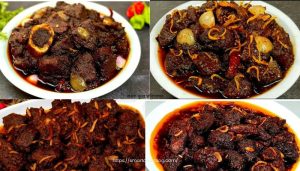

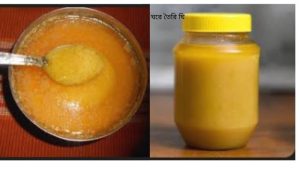


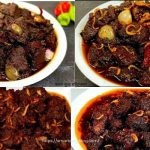
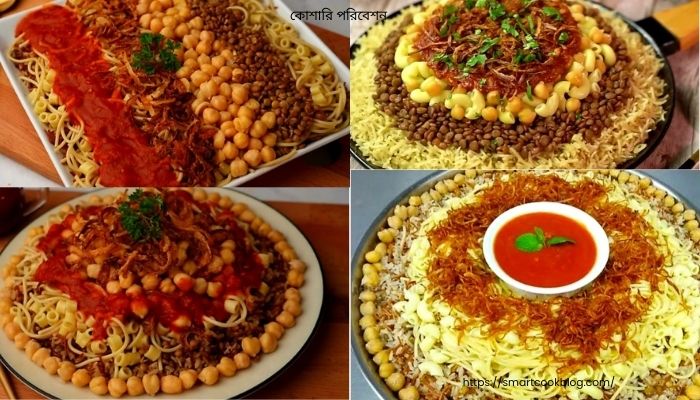


thanks